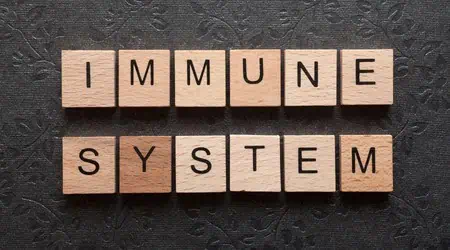
Endometriosis is an inflammatory disease that’s affected by hormones but is not caused by hormones. Instead, endometriosis is, at least in part, a disease of immune dysfunction.
In episode 4 of my podcast/YouTube video (released in March 2022), I discuss some of the new endometriosis research, including the link with genes that increase the risk of autoimmune disease, the role of a bacterial toxin called lipopolysaccharide or LPS, and new targets for natural immune-modulating treatment.
Also available wherever you get your podcasts.
Transcript
Endometriosis is an inflammatory disease that’s affected by hormones but is not caused by hormones. Instead, endometriosis is, at least in part, a disease of immune dysfunction.
Welcome back to the podcast. I’m your host, Lara Briden, a naturopathic doctor and author of the books Period Repair Manual and Hormone Repair Manual. And this episode is about a disease I thought I already knew quite a lot about. After all, I’ve treated endometriosis for 25 years and written about it on my blog and in both books. And I’ve known about the link with the immune system and something called the “bacterial contamination theory” of endometriosis, but this week, I’ve discovered just how much more there is to learn.
Because in preparation for today and a practitioner-training session later this year, I’ve spent the past few days doing a deep dive into all the recent scientific papers plus a fascinating new textbook called The Immunology of Endometriosis. Now, I’m going to distill that all down for you. And if you’re a visual person, you may also want to check out the YouTube version of this episode.
As you probably know, endometriosis is a disease in which tissue that is similar to endometrial tissue grows outside the uterus and can cause pain and other symptoms. The lesions are either laid down before birth or arrive there via retrograde menstruation. And the disease can be improved by surgery, especially excision surgery, which is the strategy of trying to excise or remove all the lesions.
The big question, though, is, “Why does the immune system get so upset about the outside-the-uterus endometrial-like tissue in some women but not others?” After all, retrograde menstruation occurs in most women, but in most women, the immune system just quietly cleans it up. What’s different with women with endometriosis?
As it turns out, there are lots of moving parts. Let’s survey some of the aspects of the disease. And then, I’ll identify what I think are the key elements in what I call the roadmap to endometriosis and some targets for natural treatment.
The first well-known aspect is estrogen, which strongly stimulates endometriosis lesions and is even made by endometriosis lesions. Which is why switching off estrogen has been the standard conventional medical treatment, but unfortunately, that approach has trade-offs because estrogen is important for general health.
On the hormonal side of things, there’s also the fact that endometriosis lesions are resistant to progesterone, which is bad because progesterone should be the hormone that slows down the growth of lesions.
As an aside, both estrogen and progesterone also affect the immune system. For example, estrogen generally promotes inflammation while progesterone generally reduces inflammation, especially the autoimmune type inflammation that we’ll discuss shortly.
Next, there’s the role of the nervous system and the fact that endometriosis lesions are
heavily innervated in a way that normal endometrial tissue is not. There’s also a complex interaction between the nervous system and the immune system called neurogenic inflammation.
Next, there are research findings about high iron, probably from damaged cells, and hypoxia or low oxygen at the site of the lesions. And actually, both of those things can activate a type of immune cell called a macrophage, which we’ll come to shortly.
Next, there’s strong evidence linking endometriosis to low androgen exposure in utero, probably due to environmental toxins. And how that can cause epigenetic changes to hormone production, hormone-sensitive tissue, and the immune system—our topic of today.
Of course, environmental toxins can cause other epigenetic changes, some of which may be transgenerational, which means your endometriosis today could be the result of an environmental toxin, such as a dioxin, that your grandmother was exposed to.
There are tons of research findings about genetics, including the presence of genes that also increase the risk of autoimmune diseases such as lupus, rheumatoid arthritis, celiac disease, autoimmune thyroid disease, and inflammatory bowel disease. Which opens a whole can of worms about whether endometriosis itself is an autoimmune disease— a question which, unfortunately, has been very controversial.
Let me just say that endometriosis looks and behaves very much like an autoimmune disease. And later in the podcast, I’ll offer some endo treatment strategies that are essentially the same strategies that work for autoimmune disease. But, I’ll stop short of saying that endo is an autoimmune disease because there’s really no need to put a definitive label.
And speaking of immune, there are more than a thousand papers about the immune dysfunction of endometriosis. And, of course, the new textbook. The research looks at every aspect and nuance of the immune situation, including lots about macrophages and the rather intriguing finding that women with endo are also likely to have a nickel allergy, which suggests a common underlying mechanism.
And finally, there are research findings about the role of the microbiome and all the different ways our resident bacteria affect hormones, immune function, and endometriosis.
Which brings us to what I feel are the key elements of endometriosis, or what I call the road to endometriosis, and what we can do about it.
First, let’s agree that there’s a background vulnerability to the disease, which is partly genetic and partly epigenetic.
Next, there’s the presence of the lesions or endometrial-like tissue, which could be laid down before birth and/or deposited via retrograde menstruation.
Next, there’s the normal level of estrogen that kicks in with puberty. Estrogen stimulates endometrial tissue and can be highly inflammatory, especially in the presence of a bacterial toxin called LPS.
Which brings us to the microbiome and the “bacterial contamination theory” of endometriosis, which states that the presence of a bacterial toxin called lipopolysaccharide or LPS in the pelvis could be an initiating factor in the immune dysfunction of endometriosis. Specifically, LPS upsets macrophages, which then interact with all the other parts of the immune system and are big players in endometriosis. To the point that one paper calls endometriosis “a disease of the macrophage.”
Interestingly, tissue hypoxia, which I briefly mentioned earlier, also activates macrophages which ties in the hypoxia research.
But where does the bacterial toxin come from? According to a couple of recent papers, the LPS could be coming from either dysbiosis of the vaginal microbiome moving upwards into the uterine lining and out via retrograde menstruation and/or from the gut via intestinal permeability and something called gut microbiota-derived extracellular vesicles.
Wow. That means that in women who are vulnerable due to genetics and epigenetics, exposure to LPS from the gut can flare or drive endometriosis. And certainly, there’s a strong link between endometriosis and gut problems. Specifically, women with endo are many times more likely to have irritable bowel syndrome or SIBO, which is small intestinal bacterial overgrowth. And that link had been assumed to be the result of endo affecting the gut. But it could be in the other direction, with intestinal permeability and LPS from SIBO driving endometriosis. Indeed, one study found that women with endometriosis are more likely to have intestinal permeability.
And downstream from all of this is the profoundly inflammatory state of endometriosis and pain.
Okay. That’s a zoomed-out view of a complicated disease. But, it does provide a few targets for natural treatment: autoimmune genotype, LPS toxin, and immune dysfunction.
First, the autoimmune genotype suggests that endometriosis could (and indeed does) respond to the same dietary interventions that help with autoimmune disease.
Specifically, I’m talking about the strict avoidance of gluten, drawing on the work of Dr Alessio Fasano, who was the first researcher to provide scientific evidence about the role of intestinal permeability and gluten in autoimmune disease.
In my clinical experience, the other protein that can drive endometriosis is A1 casein from normal dairy, which is quite similar to gluten. And sometimes eggs, but only in about 1 in 3 women with endo.
The next target for natural treatment is the LPS toxin, which can be knocked back with an antimicrobial approach. For example, antibiotics have been found to reduce the size of endometriosis lesions. Antimicrobial supplements can also be helpful, especially berberine, certain probiotics, and other supplements that work for SIBO. That’s the approach I take with my patients and discuss on my blog and in both books.
As I say to my patients, “Step one is to fix your digestion. Only then will we have any hope of improving your endo.”
Finally, we can target the immune system with all the supportive anti-inflammatory nutrients and supplements that the immune system loves. Researched immune nutrients for endometriosis include zinc and pre-formed vitamin A or retinol, which, incidentally, are two nutrients best obtained from animal foods. Other researched immune nutrients include vitamin D, selenium, N-acetyl cysteine, curcumin, resveratrol, and more.
I also regularly prescribe high-dose iodine for endometriosis both for its anti-estrogen effects and its antimicrobial, immune-modulating effects. There are some safety issues around iodine, so please see my iodine blog post, which I’ll link to in the show notes.
As for other references, they’re too numerous to put in the show notes, so please ask me in my forum.
I hope that’s been helpful, and thanks so much for listening. Please share and leave a review.
And I’ll see you next time when I’ll discuss body-identical or bioidentical hormone therapy.

